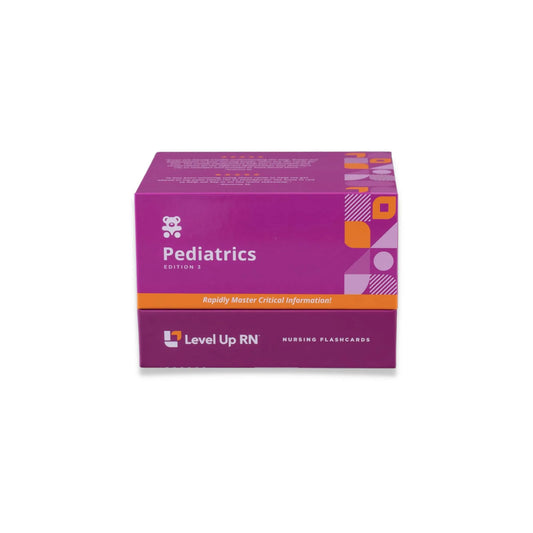Hi, I'm Cathy with Level Up RN. In this video, I'm going to continue my coverage of pediatric gastrointestinal disorders. Specifically, I'll be talking about omphalocele and gastroschisis. And at the end of the video, I'm going to give you guys a little quiz to test your knowledge of some of the key points I'll be covering, so definitely stay tuned for that. And if you have our Level Up RN pediatric nursing flashcards, go ahead and pull out your flashcards so you can follow along with me.
Omphalocele and gastroschisis are congenital defects of the abdominal wall that allow for the herniation of abdominal organs. So with omphalocele, the defect occurs through the umbilical ring, and we have the herniation of abdominal organs that are covered with peritoneum. With gastroschisis, the defect occurs to the right of the umbilicus, and we have the herniation of bowel that is not covered with peritoneum. These defects can be diagnosed with a prenatal ultrasound. In addition, levels of MSAFP, which stands for maternal serum alpha-fetoprotein, may be increased during pregnancy when one of these defects is present. Treatment of these disorders includes surgical closure of the defect as well as administration of IV fluids, electrolytes, as well as antibiotics. As the nurse, you will need to place an orogastric tube in order to decompress the stomach, and then it's going to be super important to protect the exposed bowel prior to surgery. This means we will be placing a protective non-adherent dressing over the area. And in many cases, particularly with gastroschisis where we don't have that protective peritoneum over the abdominal organs, we will need to place the lower half of the infant in a sterile, clear, plastic bowel bag. So this bag allows for protection and decreased heat and moisture loss, but still allows for visualization of the bowel.
All right. It's quiz time, and I've got three questions for you.
Question number one. Blank is a defect that occurs through the umbilical ring with herniation of abdominal organs that are covered with peritoneum.
The answer is omphalocele.
Question number two. What lab value may be elevated during pregnancy when omphalocele or gastroschisis is present?
The answer is MSAFP.
Question number three. Why is the lower half of a baby with gastroschisis placed in a plastic bowel bag?
The answer is to provide protection and decrease heat and moisture loss.
All right. That's it for this video. I hope you found it to be helpful. Take care and good luck with studying.


